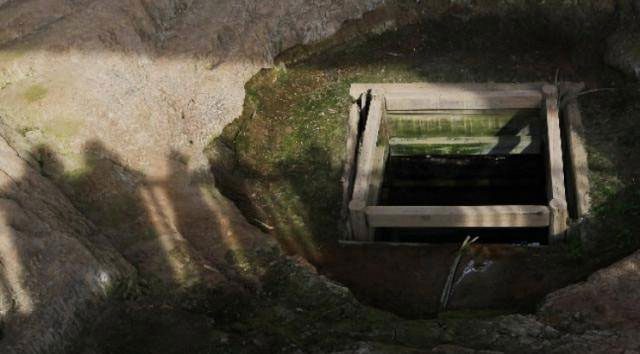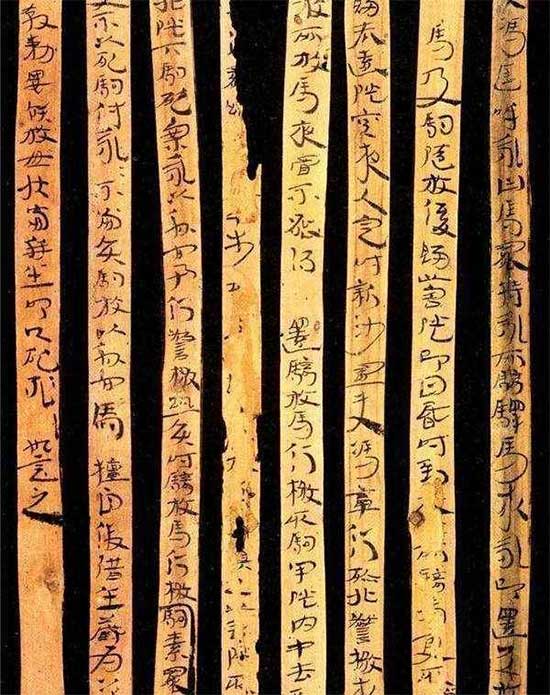This is considered one of the most important archaeological discoveries of the Qin Dynasty since the Terracotta Army was unearthed in 1973 in Xi’an.
Xiangxi (Hunan, China) is home to many ethnic minorities, with the Miao people having lived here for generations, showcasing numerous ancient buildings that reflect a unique architectural style.
In 2002, an archaeological team conducted excavations in Xiangxi at the ruins of the Lijiac fortress and discovered a well. This well dates back to the Qin Dynasty, prompting experts to plan an exploration.

Ancient Qin Well. (Illustrative image).
After careful planning and execution, the archaeologists entered the ancient well, leading to discoveries that shook the nation.
Ultimately, experts found a large quantity of inscriptions within the ancient well, written on 37,000 bamboo slips from the Qin Dynasty. These bamboo slips had been buried in mud, with some inscriptions remaining clear while others had deteriorated over time. Archaeologists named this collection of texts “Lijiac Bamboo Slips,” which created a nationwide sensation and is regarded as one of the most significant archaeological discoveries in China in the 21st century.
Why did the discovery of the Lijiac Bamboo Slips create such a significant impact?
Because the Lijiac Bamboo Slips contain a wealth of information that differs from the official historical narrative, to the extent that they are believed to “have the potential to change history.”
During the Qin Dynasty, a major event occurred known as “The Burning of Books and Burying of Scholars.” Qin Shi Huang ordered the destruction of many types of literature and the live burial of numerous Confucian scholars, which took place around 213-212 BC. The aim was to eliminate all thoughts and doctrines that existed during the Spring and Autumn and Warring States periods, thereby establishing Legalism as the sole philosophy to serve the rule of the Qin Dynasty.
This move by Qin Shi Huang unified the nation’s ideology but also created gaps in history.

A portion of the Lijiac Bamboo Slips.
Among the 37,000 bamboo slips from the Qin Dynasty, experts have cataloged approximately 200,000 characters, most of which reflect the history of the pre-Qin and Qin periods, documenting the administrative and legal texts of the Qin Dynasty. This is regarded as the most important archaeological discovery of the Qin Dynasty since the Terracotta Army was unearthed in 1973 in Xi’an.
This is not the first time that ancient texts with the potential to “change history” have been discovered in China, but the Lijiac Bamboo Slips are the largest and most significant collection.
In 1972, two Han Dynasty tombs were discovered in Yinzhu Mountain, Linyi City, Shandong Province. Both tombs had been severely damaged by tomb raiders; however, after archaeologists arrived, they still found several valuable items. Among these were the famous Yinzhu Bamboo Slips. This collection recorded many rare ancient military texts, including 16 chapters of the lost “Sun Bin’s Art of War” attributed to Sun Bin during the Warring States period, along with 5 previously unknown chapters of the “Art of War” by Sun Tzu and 7 chapters of “Six Secret Teachings” that previously only had titles.
In 2012, the work “Art of War” from the Yinzhu tomb was evaluated as one of the nine national treasures of China.
The emergence of the Yinzhu Bamboo Slips confirmed the actual existence of “Sun Bin’s Art of War” and also affirmed that “Art of War” was not authored by Sun Bin. Thus, a historical mystery was resolved.
However, overall, the discovery of the Lijiac Bamboo Slips is even more valuable. For instance, the “Counting Table” contains some of the earliest multiplication methods found in the world, which were discovered within the Lijiac Bamboo Slips. Nevertheless, the full content of the Lijiac Bamboo Slips has not been completely published, with archaeologists stating: “We absolutely do not dare to publish this content!”
The Lijiac Bamboo Slips contain up to 200,000 characters, many of which remain undeciphered due to their deteriorated condition. Some contents within the Lijiac Bamboo Slips do not align with the official historical narrative, and as archaeologists do not fully understand the meaning of these ancient inscriptions, they hesitate to publish them in full. Currently, the Lijiac Bamboo Slips are displayed in a museum in Lijiac, Hunan, where only a small portion of their content is revealed, yet it remains intriguing and significant.


















































